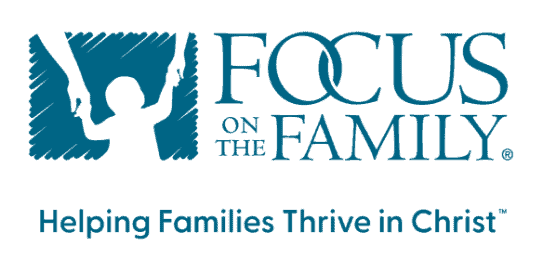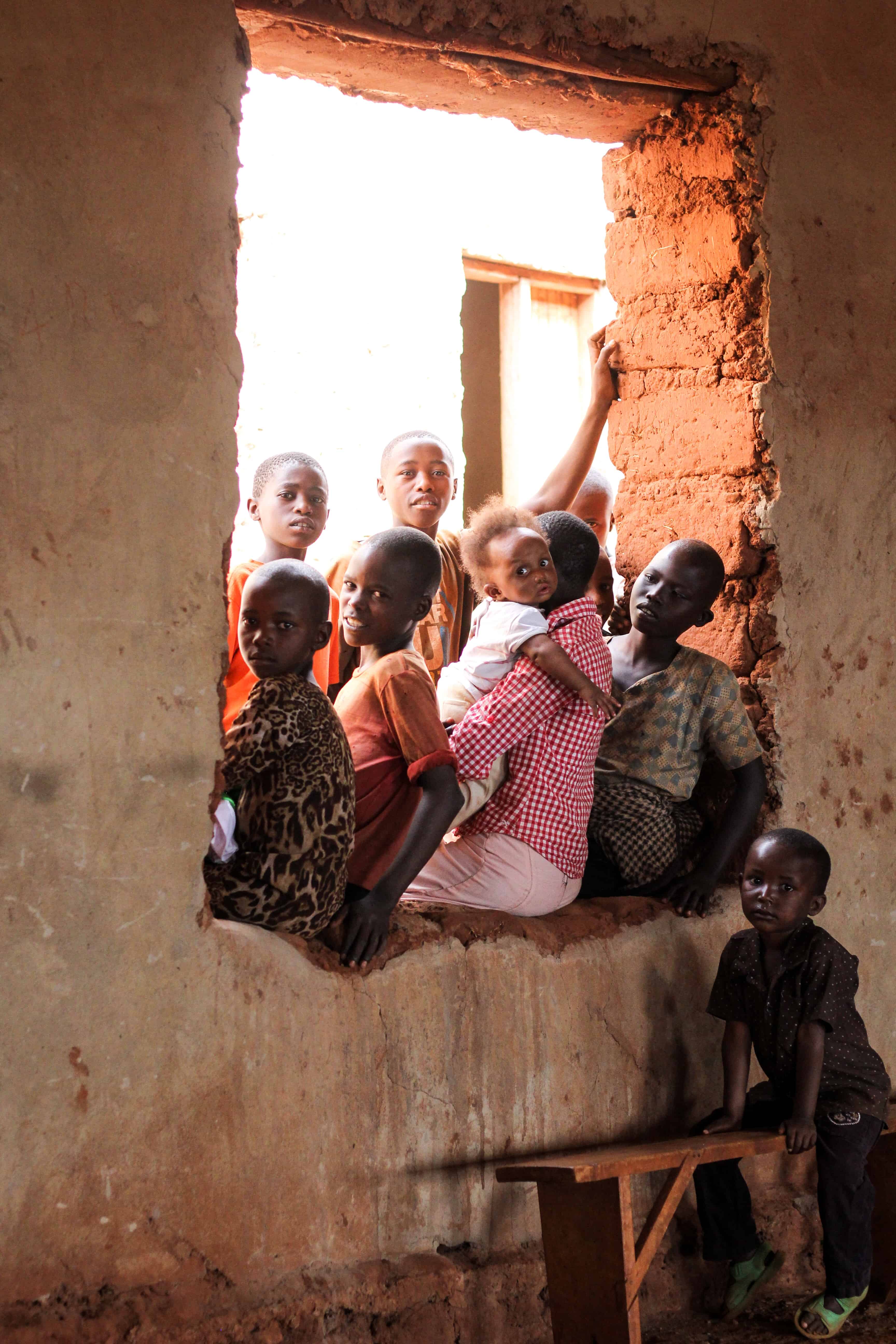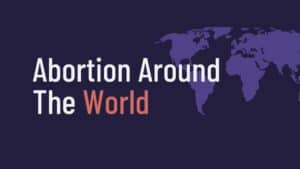Poverty carries significant and detrimental ramifications for women and children. Physical and emotional health, educational success, safe and desirable living conditions, optimism regarding the future, and the provision of basic resources are all impacted by poverty – or the lack, thereof. That being the case, it is essential that all who care about the social well-being and dignity of women and children understand the depth and breadth of this connection. To that end, the following is a brief overview of the history and academic findings on the connection between marital stability and the elevation out of and protection from poverty.
The contemporary story starts in 1965.
I. The Moynihan Report
This widely publicized government report was effectively the first shot fired in the modern culture war over the family. In 1965, Assistant Secretary of Labor for the Johnson Administration, Daniel Patrick Moynihan, warned that the gains anticipated by the passage of the Civil Rights Act of 1964 might not be fully realized if considerable attention was not paid to another great challenge in the African-American community: the crumbling of its families. The “Moynihan Report,” as it came to be known, explained in great detail the nature of this problem, which Moynihan described as the Johnson Administration’s “case for national action.”
On the first page of his report, Moynihan warned,
The fundamental problem, in which this is most clearly the case, is that of family structure. The evidence – not final, but powerfully persuasive – is that the Negro family in the urban ghettos is crumbling. …So long as this situation persists, the cycle of poverty and disadvantage will continue to repeat itself.
This is because
[at] the heart of the deterioration of the fabric of society is the deterioration of the Negro family. It is the fundamental source of weakness of the Negro community at the present time.Daniel Patrick Moynihan, The Negro Family: The Case for National Action, Office of Policy Management and Research, United States Department of Labor, March 1965, p. 3. A valuable book on the heritage and consequences of the Moynihan Report is James T. Paterson’s Freedom is Not Enough: The Moynihan Report and America’s Struggle over Black Family Life from LBJ to Obama, (Basic Books, 2010).
Both Moynihan and President Johnson were excoriated because the report was seen as blaming the plight of black Americans on their difficulty in holding their families together. Writing to a friend months after the report’s release, Moynihan vividly lamented, “If my head were sticking on a pike at the South West Gate to the White House grounds the impression [of disdain toward me] would hardly be greater.”Nicholas Lemann, “Postscript: Daniel Patrick Moynihan,” The New Yorker, April 7, 2003.
Of course, over the subsequent decades the prescience of Moynihan’s report has, unfortunately, been borne out.
II. The Feminization of Poverty
Professor Diana Pearce, director of the Center for Women’s Welfare at the University of Washington, coined the important term “the feminization of poverty” in 1978, warning in the opening line of her paper, “Poverty is rapidly becoming a female problem.”
While women were enjoying increased independence and empowerment in society, Pearce explains that “for many the price of that independence has been their pauperization and dependence on welfare.”Diane Pearce, “The Feminization of Poverty: Women, Work and Welfare,” The Urban & Social Change Review, 11 (1978) 28-38.
She pointed out that the number of female-headed homes had increased nearly 40 percent in a single generation at the time of her writing and “at the same time, the economic well-being of this growing group has eroded.” She notes this happened just when “other trends would suggest potential for improving women’s status” such as increased labor-force participation, mandates for affirmative action, and increasing employment of women with better educational opportunities.
Pearce goes on to suggest that stronger welfare policies and public transfers to working single mothers are the answers to this widespread problem. However, it is difficult to overlook the fact that the poverty crisis among women is overwhelmingly the result of changing sexual and social ethics and practices. In other words, what we are seeing is a sexual revolution that gave men a pass on facing up to their pro-creative responsibilities.
III. Letting Men Off the Hook
Nobel-Prize-winning economist George Akerlof explained this very point in the mid-1990s, positing that a major player in the dramatic increase in female-headed homes, and their accompanying impoverishment, was “the declining practice of ‘shotgun marriage.'” Prior to the early 1970s, if an unmarried woman became pregnant, it was expected that the responsible male would marry her. What’s more, in the majority of instances, marriage did indeed follow an unexpected and illegitimate pregnancy.
The introduction of oral contraception changed that. Women now seemingly had the ability to take control of their own fertility, rather than depending on the self-control or prophylactic use of their male counterparts. When a woman did find herself pregnant, the baby’s father was able to disavow any responsibility – not only because the woman in question had access to the pill, but also because there was now an alternative “solution” in place through legalized abortion. As a result, marriage was no longer a foregone conclusion when a couple was faced with an unexpected pregnancy – and, more often than not, the woman and her child eventually declined into poverty. Sadly, Akerlof’s observations have proven all too accurate.
In terms of specific numbers, Akerlof explained that if the rate of marriages occurring in the 1960s that were prompted by unexpected pregnancies had remained consistent into the 1980s, the incidence of unmarried births would have risen during that time by only 25 percent, rather than the actual 75-percent increase we saw take place. Regarding the black population, the rise would have been 40 percent, as opposed to the 60-percent increase that occurred.George Akerlof, Janet L. Yellen and Michael L. Katz, “An Analysis of Out-of-Wedlock Childbearing in the United States,” The Quarterly Journal of Economics, 111 (1996) 277-317, p. 278. The “feminization of poverty” could therefore have been a mere fraction of what it ultimately became. Marriage, then, would seem to be the missing element in a culture that is seeing growing numbers of women and children – not to mention subsequent generations – enduring poverty and its accompanying hardships.
It can be concluded that sexual ethics are not just private issues germane only to the individual, but are very consequential for families, communities, and whole societies.
IV. Gary Becker: A Treatise on the Family
The celebrated economist and 1992 Nobel Laureate, Gary Becker, published a pioneering book in 1981 titled A Treatise on the Family. With mathematical sophistication and detail, Becker demonstrates how marriage significantly improves the lives of families and its members across distinct cultures by creating and supporting a particular, specialized division of labor between wife and husband, mother and father. This enduring specialization raises the educational opportunities, material well-being, social mobility, and overall satisfaction of both partners. Of course, these benefits transfer in significant ways to the lives of their children and grandchildren; an outcome that is arguably more meaningful and lasting than any other factor.
This specialized division of labor produces a unique economy of scale between husband and wife and a greater protection against the risks and downturns in material resources that life occasionally brings. Becker contends,
Although the sharp sexual division of labor in all societies between the market and household sectors is partly due to the gains from specialized investments, it is also partly due to the intrinsic differences between the sexes.
… I suggest that men and women have intrinsically different comparative advantages not only in the production of children, but also in their contribution to child care and possibly to other activities. Such intrinsic differences in productivity determine the direction of the sexual division by tasks and hence sexual differences in the accumulation of specific human capital that reinforces the intrinsic differences.Gary S. Becker, A Treatise on the Family, (Harvard University Press, 1981/1993) p. 37, 62.
And of course, children benefit uniquely from increased creative efficiency of married homes. Becker’s treatise received criticism from some quarters because of its foundation upon the general division of labor in sex-typed ways: wives handling the great majority of the domestic work and home management and the husband carrying most of the family’s market-labor work. This distinction might seem to make his work less true today given a greater egalitarianism of the sexes in the intervening years, but recent research shows this is not necessarily the case.Robert I. Lerman and W. Bradford Wilcox, For Richer, For Poorer, How Family Structures Economic Success in America, (American Enterprise Institute/Institute for Family Studies, 2014), p. 32.
These three developments – 1) The Moynihan Report, 2) the recognition of the growing feminization of poverty and the impact of developments in contraception, and 3) the understanding of the unique specialization of work and resources created by husband and wife – laid an early foundation for understanding the role that family formation plays in the increase and decrease in poverty for mothers and their children.
The following works represent the most significant quantifications of the connection between family structure and poverty, and they approach the topic from various political and ideological perspectives.
V. The Progressive Policy Institute and the First Clinton Campaign
The Progressive Policy Institute, which started as a think tank, of sorts, for President Clinton’s first presidential campaign, distributed some remarkably compelling data showing just how powerful family formation and cohesiveness are in driving down poverty.
In their important white paper for the Institute, Elaine Kamarck and Bill Galston, who became President Clinton’s Domestic Policy Advisor, explained in crisp language,
It is no exaggeration to say that a stable, two-parent family is an American child’s best protection against poverty.Elaine Kamarck and William Galston, “Putting Children First: A Progressive Family Policy for the 1990s,” whitepaper from the Progressive Policy Institute (September 27, 1990), p. 12.
Additionally, Galston explains that never living in poverty in the U.S. has three primary requirements:
- Finish high school
- Marry before having children
- Marry after the age of 20
Only 8 percent of people who fulfill these three criteria are poor, while 79 percent of those who fail to do so will be impoverished.James Q. Wilson, The Marriage Problem: How Our Culture Has Weakened Families, (Harper Collins, 2002), p. 11.
Isabel Sawhill, Galston’s celebrated colleague at Brookings Institution and a tireless advocate for the well-being of children, made this bold statement:
The proliferation of single-parent households accounts for virtually all of the increase in child poverty since the early 1970s.Daniel P. Moynihan, “A Dahrendorf Inversion and the Twilight of the Family: The Challenge of the Conference,” in Daniel P. Moynihan, Timothy M. Smeeding and Lee Rainwater, eds., The Future of the Family, (New York, New York: Russell Sage Foundation , 2004), p.xxi.
VI. The Atlantic’s “Dan Quayle Was Right”
Murphy Brown, the primary character in a popular 1990s sitcom featuring the eponymous character played by Candice Bergen, was an investigative journalist and anchor for a fictional news show. Brown, a powerful and well-heeled professional, determines that she can indeed “have it all” and decides to become a single mother. Vice President Dan Quayle used Murphy Brown as an illustration in a now infamous speech in which he decried the rise of intentional single-motherhood as our nation’s growing “poverty of values.” His remark had the effect of throwing a barrel of gasoline upon the already healthy flames that were the culture war on the family. As for Vice President Quayle, he was widely derided and dismissed for those remarks.
The following year a center-left Democrat, journalist Barbara Dafoe Whitehead, wrote an equally explosive essay for The Atlantic explaining in precise detail just why “Dan Quayle Was Right,” as the piece was titled. This April 1993 cover story was single-handedly responsible for making that edition the runaway best-selling issue in the magazine’s distinguished 158-year history.
Whitehead explained,
Children in single-parent families are six times as likely to be poor. They are also likely to stay poor longer. Twenty-two percent of children in one-parent families will experience poverty during childhood for seven years or more, as compared with only two percent of children in two-parent families.
She continues,
Single-mother families are vulnerable not just to poverty, but to a particularly debilitating form of poverty: welfare dependency. …Most social scientists now agree that single motherhood is an important and growing cause of poverty.Barbara Dafoe Whitehead, “Dan Quayle Was Right,” The Atlantic Monthly, April 1993.
VII. Princeton’s Sara McLanahan
Professor Sara McLanahan, a central figure among leading family sociologists, started her academic career as an adherent to the school of thought claiming that single-parent families are just another form of family. But in her now decades-long work at Princeton investigating how family form affects child well-being, she’s come to conclude the opposite: there are many serious downsides for children being raised in non-marital homes.
A. Growing Up with a Single-Parent
One of the most published and respected scholars in this field, McLanahan provided a deeply informed examination of the outcomes for children in single-parent families in her 1994 work, Growing Up With a Single Parent: What Hurts, What Helps. McLanahan explains there is not much in single-parenthood that helps a child, particularly regarding protection from poverty.
In 1992, approximately 45 percent of families with children headed by single mothers were living below the poverty line, as compared with 8.4 percent of families with two parents.Sara McLanahan and Gary Sandefur, Growing Up With a Single Parent: What Helps, What Hurts, (Harvard University Press, 1994), p. 23.
B. The Fragile Families and Child Wellbeing Study
It would be difficult to overstate the significance of this $17 million, multi-decade study initiated primarily by McLanahan. The study follows a cohort of nearly 5,000 U.S. children born from 1998 to 2000, 75 percent of whom come from unmarried homes. It originates from the Center for Research on Child Wellbeing at Princeton and the National Center for Children and Families at Columbia University and involves eight principle investigators.
The study, since 1998, continues to produce a nearly innumerable collection of working papers, published journal articles, books, and book chapters. This collective work adds untold insights to our understanding of how children are disadvantaged in their development by being born into and raised in fragile families headed by unmarried mothers, whether single or cohabitating.
Perhaps the single best summary of the findings of the Fragile Families study are collected in the journal, The Future of Children, in its Fall 2010 edition.
VIII. Edin and Kefala – Promises I Can Keep
Kathryn Edin and Maria Kefalas made tremendous contributions to the study of marital status and poverty in their 2005 book, Promises I Can Keep: Why Poor Women Put Motherhood before Marriage. Their work is an ethnographical look at 162 poor mothers from eight struggling neighborhoods in the Philadelphia and Camden areas. Through personal stories, they document the drastic and negative impact of unmarried childbearing on the ability of single mothers to rise above their current (and often dire) economic status.
Edin and Kefalas document, as did William Julius Williams in his pioneering book, The Truly Disadvantaged, how many of these mothers strongly desire to marry. However, their prospects of finding marriageable men in their communities are nearly non-existent, as the transfer of reliable manufacturing jobs overseas makes these men unreliable providers. Edin and Kefalas write,
Poor young women who put motherhood before marriage do not generally do so because they reject the institution of marriage itself, but because good, decent, trustworthy men are in short supply.Kathryn Edin and Maria Kefala, Promises I Can Keep: Why Poor Women Put Motherhood Before Marriage, (University of California Press, 2005), p. 130.
IX. The Disappearing Middle Class and Diverging Destinies
While previous work on family form and child poverty had been focused on the ways in which family fragility drives important health and development outcomes for women and children, the discussion started to take a new and important turn in the early 2000s.
It began to be posited that family fragmentation is associated not only with persistent poverty, but also with an emerging class divide. Scholars started to point out how it was no longer only – or even primarily – race, employment or education that create class divide, but marriage itself.
Following are the primary contributors to this understanding that continues to be explored and substantiated today.
A. Jonathan Rauch – The Widening Marriage Gap
In 2001 a noted journalist with the National Journal published a brief and game-changing essay that served as one of the first wake-up calls regarding the connection between marital status and class divide. Rauch put it this way,
…[P]overty correlates more strongly with a family’s marital status than with its race. According to Census Bureau data, a two-parent black household is more likely to be poor than is a two-parent white household, but both are far less likely to be poor than is a mother-only household of either race. In other words, if you are a baby about to be born, your best odds are to choose married black parents over unmarried white ones.
Rauch concludes that as America is “splitting into two increasingly divergent and self-perpetuating streams” we are finally coming to understand “marriage as the dividing line.”Jonathan Rauch, “The Widening Marriage Gap: America’s New Class Divide,” National Journal, May 19, 2001, 1471-1472.
B. Robert Lerman – Urban Institute
In terms of unprecedented insights into the relationship between family formation and poverty, perhaps second only to McLanahan’s longitudinal, multi-dimensional Fragile Families study is a series of white papers coming from the Urban Institute. Produced by American University’s Robert Lerman, an economist concentrating on low-income populations, these four papers address the question of whether the resurgence of marriage among low-income families of various races and ethnicities could make a difference in elevating their life prospects. His findings are so singular and perceptive that a brief summary of each is warranted.
1. Lerman’s first white paper is a review of the literature up to July 2002. He shows that, even while there’s an equal number of income-earning and domestically-contributing adults in the home, “married couples still show a substantial economic advantage” compared to their cohabiting peers. He elaborates,
Married couples have incomes nearly four times their basic needs, a ratio that is 30-70 percent higher than what cohabiting couples experience and 63-113 percent higher than what single parents [with another live-in adult, such as a sibling, friend or mother] experience.
This is true even though married women generally work fewer hours in the market-economy than cohabiting women and married men work more hours, stay employed longer and get promoted at higher rates than their comparable cohabiting peers.
A key question for Lerman is the one Rauch addressed – namely, whether these marriage premiums for a family’s financial stability extend to low-income families. Lerman reports,
The results reveal that marriage significantly and substantially reduces the likelihood of poverty, holding constant for family background, race and ethnicity, age, education… Having ever been married reduces poverty by one-third, while currently being married reduces poverty by two-thirds.Robert I. Lerman, “Marriage and the Economic Well-Being of Families with Children: A Review of the Literature,” (Urban Institute and American University, July 2002), p. 10, 27-28.
2. Lerman’s second paper examines, among many issues, the roll “shotgun” marriages play in family poverty. As George Akerlof (see number III above) explains, marriages prompted by unplanned pregnancies were common until 1970 but are nearly absent today.
Comparing mothers and their children from “shotgun” marriages and those who remained single, Lerman found that “the women entering shotgun marriages experienced a 38 percent higher level of living standards and a 20 percent lower variability of living standards [i.e., significant fluctuations in standard of living due to financial instability].”
He adds,
The increases in living standards associated with early marriage were highly positive and significant for all races among women who had a premarital pregnancy leading to a birth. …Even controlling for…academic ability, school completion, family background, race, age at pregnancy, women who are married between pregnancy and the birth of their first child averaged a 30 percent higher income-to-needs ratio and a 15 percent lower degree of [fluctuating financial security].
Such marriages were also associated with reducing by half the number of years the mothers, fathers and children spent in poverty compared with those who did not marry before the birth of their first child. This difference was even greater – and by substantial margins – for black mothers and those with low educational test scores.
Lerman concluded these findings by stating,
Even among the mothers with the least qualifications and highest risk of poverty, marriage effects are consistently large and statistically significant.Robert I. Lerman, “Married and Unmarried Parenthood and Economic Well-Being: A Dynamic Analysis of a Recent Cohort,” (Urban Institute and American University, July 2002), p.20-22, 32.
Specifically, for those women entering marriage between the conception and birth of their first child, their standard of living is raised by
- 65 percent over a single mother with no other live-in adult
- 50 percent over a single mother living with a non-romantic adult
- 20 percent over a single mother living with a man
3. In his third paper, Lerman addresses the various concomitant hardships for children relative to family form. He again finds that it’s the state of being married, rather than the presence of two potential wage-earners, that makes the difference:
Poverty rates of cohabitating couples are double those of [before-first-conception] married parents; non-cohabiting single parents with at least a second adult had poverty rates three times as high as among married parents. The apparent gains from marriage are particularly high among black households.
In terms of the day-to-day financial responsibilities facing most families, the differences are still stark. Even among households with similar incomes and comparable demographic and educational characteristics, the following statistics demonstrate that, over the past year, non-married households have experienced greater difficulty meeting their basic living expenses and bills.
Percentage Unable to Meet Utilities, Food and Rent Sometime in Past Year
| Married | Cohabiting | Single w/ other adult |
Single w/ no other adult |
| 15% | 30% | 33% | 36% |
.telerik-reTable-4 { border-collapse: collapse; border: solid 0px; } .telerik-reTable-4 tr.telerik-reTableHeaderRow-4 { border-width: 1.0pt 1.0pt 3.0pt 1.0pt; margin-top: 0in; margin-right: 0in; margin-bottom: 10.0pt; margin-left: 0in; line-height: 115%; width: 119.7pt; background: #4F81BD; padding: 0in 5.4pt 0in 5.4pt; color: #FFFFFF; } .telerik-reTable-4 td.telerik-reTableHeaderFirstCol-4 { padding: 0in 5.4pt 0in 5.4pt; } .telerik-reTable-4 td.telerik-reTableHeaderLastCol-4 { padding: 0in 5.4pt 0in 5.4pt; } .telerik-reTable-4 td.telerik-reTableHeaderOddCol-4 { padding: 0in 5.4pt 0in 5.4pt; } .telerik-reTable-4 td.telerik-reTableHeaderEvenCol-4 { padding: 0in 5.4pt 0in 5.4pt; } .telerik-reTable-4 tr.telerik-reTableOddRow-4 { border-width: 1pt; color: #666666; vertical-align: top; border-bottom-style: solid; border-bottom-color: #4F81BD; } .telerik-reTable-4 tr.telerik-reTableEvenRow-4 { color: #666666; vertical-align: top; } .telerik-reTable-4 td.telerik-reTableFirstCol-4 { border-width: 1pt; border-color: #4F81BD; padding: 0in 5.4pt 0in 5.4pt; border-bottom-style: solid; border-left-style: solid; } .telerik-reTable-4 td.telerik-reTableLastCol-4 { border-width: 1pt; border-color: #4F81BD; border-bottom-style: solid; border-right-style: solid; padding: 0in 5.4pt 0in 5.4pt; } .telerik-reTable-4 td.telerik-reTableOddCol-4 { border-width: 1pt; border-color: #4F81BD; padding: 0in 5.4pt 0in 5.4pt; border-bottom-style: solid; } .telerik-reTable-4 td.telerik-reTableEvenCol-4 { border-width: 1pt; border-color: #4F81BD; padding: 0in 5.4pt 0in 5.4pt; border-bottom-style: solid; } .telerik-reTable-4 tr.telerik-reTableFooterRow-4 { color: #355C8C; background-color: #FFFFFF; vertical-align: top; padding: 0in 5.4pt 0in 5.4pt; } .telerik-reTable-4 td.telerik-reTableFooterFirstCol-4 { border-width: 1pt; border-color: #4F81BD; border-bottom-style: solid; border-left-style: solid; padding: 0in 5.4pt 0in 5.4pt; } .telerik-reTable-4 td.telerik-reTableFooterLastCol-4 { border-width: 1pt; border-color: #4F81BD; border-bottom-style: solid; border-right-style: solid; padding: 0in 5.4pt 0in 5.4pt; } .telerik-reTable-4 td.telerik-reTableFooterOddCol-4 { border-width: 1pt; border-color: #4F81BD; border-bottom-style: solid; padding: 0in 5.4pt 0in 5.4pt; } .telerik-reTable-4 td.telerik-reTableFooterEvenCol-4 { border-width: 1pt; border-color: #4F81BD; border-bottom-style: solid; padding: 0in 5.4pt 0in 5.4pt; }
These differences existed not only for families with similar socio-economic characteristics but, even more specifically, for those with the same income-to-needs ratios.Robert I. Lerman, “How Do Marriage, Cohabitation and Single Parenthood Affect the Material Hardships of Families with Children,” (Urban Institute and American University, July 2002), p.20, 27.
4. Similarly, Lerman’s fourth paper delves deeper into this question of how family form impacts the material hardships for mothers and children, such as missed meals, rent, and utility payments due to financial struggles. He found that the “marriage impacts were quite large, generally higher than the effects of education,” with the impacts being highest among black families.Robert I. Lerman, “Impacts of Marital Status and Parental Presence on the Material Hardship of Families with Children,” (Urban Institute and American University, July 2002).
C. Sara McLanahan – Diverging Destinies
This is an important term coined by Sara McLanahan in a 2004 paper published in the journal Demography

















